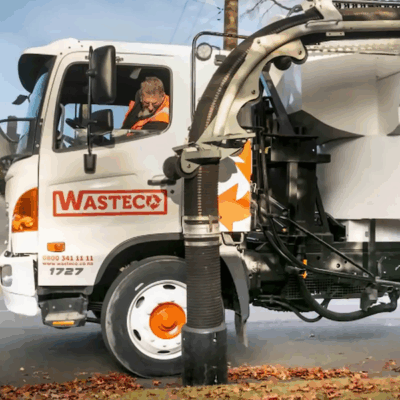A guide to Government grants and tax incentives for businesses.
When you think about funding your business growth, you’re most likely to think of debt, equity and revenue. Yet there is a fourth source of funding, and it may be more accessible than you realise.
The New Zealand Government is paying out millions of dollars to great businesses every year in the form of grants and tax incentives.
Grants often run in competitive funding rounds, with limited available funds, where only the strongest applications succeed.
Tax incentives are not competitive; they’re legislated entitlements designed to encourage investment in certain activities.
Government grants or tax incentives are available to many businesses but often goes untapped. Why? Because too many applications are poorly prepared, the processes can be complex and time consuming, and misconceptions or hearsay can lead business owners to assume they won’t qualify.
It can also be hard to keep up with what is currently available, and be off-putting to navigate how to access it. So here’s a quick guide to help you dive in.
Grants shake-ups and new funding in 2025
While there might seem to be fewer grants since the change to a National/ACT Government, there are some attractive new programmes like the Primary Sector Growth Fund or Ara Whaihua grants that will appeal to certain businesses.
You’ll also want to check out what’s on offer from MBIE, MPI, NZTE, Kanoa, EECA, the Regional Business Partner network, and even Work and Income if you are just starting out.
If you’re investing in innovation or new product development, you’d be wise to consider the New-to-R&D grants, which can pay up to $400,000 per business.
That’s enough to bring in highly technical staff or contractors to help get your new product to market.
Last year 524 businesses received grants worth more than $47 million from Callaghan Innovation alone, not to mention other sources. These are grant programmes that will all continue, even as Callaghan is being dis-established.
Tax incentives are tricky but rewarding
For those who are pushing the boundary, there are two separate R&D tax programmes, that are easier to access than many realise: The R&D Tax Incentive, and the R&D Loss Tax Credit.
NZ’s R&D funding is some of the best in the world. The IRD recently revealed more than $300 million in R&D tax credits and refunds were distributed to nearly 1,000 business in the 2023 tax year alone.
Yet, StatsNZ estimates there are over 2,200 kiwi businesses conducting R&D. So why are so many missing out?
The most common reason we hear is “the rules are too frustrating”. And the tax system too complicated. But with a bit of understanding and a fresh set of eyes on the business, we often find the story changes.
The eligible R&D is already happening. Consider one of the country’s largest logistics operations. In 2022, the company’s board approved a three-year programme of experimental process improvements that would establish a global competitive advantage.
The company was told by their accountants that the tax incentives were a waste of time.
Yet on review, they did qualify, and the company was able to submit all project wages, contractor costs, depreciation and more to the R&D Tax Incentive, effectively subsidising the project by 15 percent.
A second objection to tax incentives is more nuanced: “A tax credit doesn’t help me when I’m not paying tax yet”.
But here we’ve just got to look past the name. For most preprofit or loss-making businesses, their tax credit is realised as a cash payment from the IRD, providing a welcome cashflow boost.
Take a company that was founded as a start-up in 2019 to develop a new agricultural product. With two co-founders and some visionary investors, the company could fund the early prototypes, on a limited budget.
A grant then refunded 40 percent of what had been spent, and R&D tax credits now refund 43 percent of the yearly spend on R&D, every year until this company breaks even.
Building a funding strategy
Building a funding strategy means looking at the full picture of how your business will finance growth and innovation.
Grants and tax incentives should sit alongside debt, equity, and revenue, providing support that reduces costs without the trade-offs of repayment or ownership dilution.
Unlike debt, they carry no interest rate, and unlike equity, they don’t dilute your shareholding – so you keep more of the business in your hands.
By treating these tools as part of a broader capital mix, businesses can balance external capital with their own revenue, lower risk, and build a more sustainable pathway to growth.
Quick check: Could your business qualify for grants or tax incentives?
- We’ve worked on a new product, service, or process in the past two years.
- We employ staff or contractors focused on innovation, product development, or R&D.
- We’ve invested in new equipment, technology, or systems to improve our operations.
- We’re developing new intellectual property or commercialising innovation.
- We operate in the primary industries, manufacturing, technology, or export sectors.
- We’re partnering with universities, research institutions, or other businesses to innovate.
- We’re developing sustainable practices or technologies that reduce environmental impact.
- We’ve undertaken digital transformation, automation, or system upgrades.
- We’re trialling prototypes, pilot projects, or proof-of-concept activities.
- We’re creating solutions with broader industry or community benefit.
If any of these ring true, there’s a chance your business could be eligible for funding through grants and tax incentives.
I need help with this
The good news is you don’t have to navigate grants and tax incentives on your own.
There are a few specialist advisors who work throughout the process, from identifying the right opportunities, to preparing strong applications, and ensuring compliance with the rules.
Working with an advisor means you can stay focused on running your business, knowing that the funding side is in expert hands. www.thebluerock.co.nz or contact Tom Moore – NZ [email protected]







